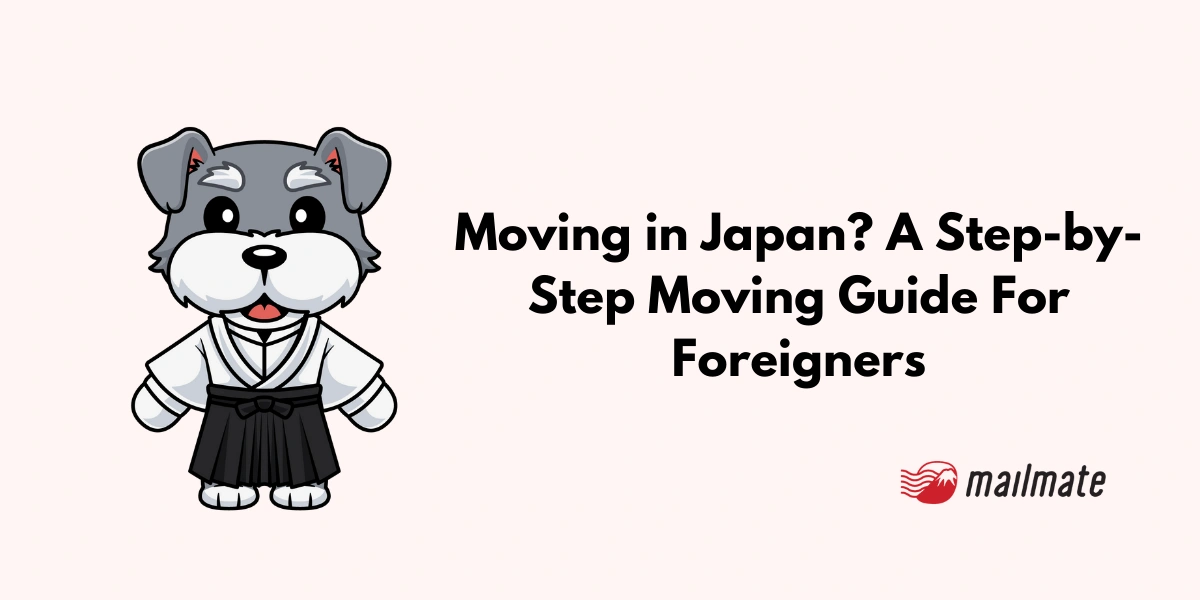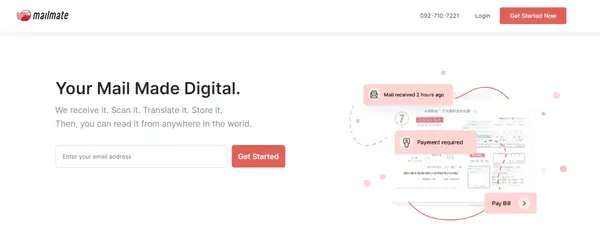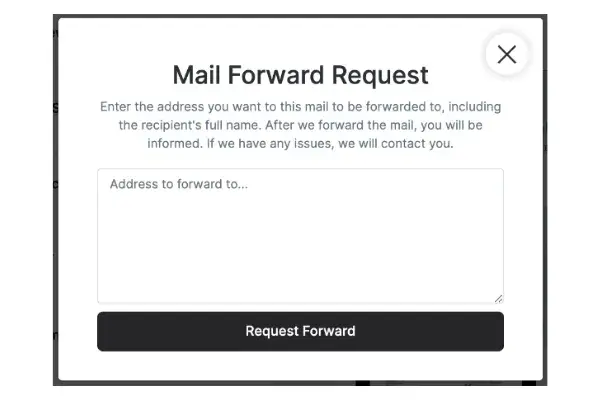Moving in Japan? A Step-by-Step Moving Guide For Foreigners

Moving in Japan is no different than returning to your home country.
But moving around here for the time can be a bit intimidating, so we have the best moving within Japan guide to help you make this process a little easier.
Before moving in Japan
Let's start with what needs to be done before you start moving within Japan.
One month prior
Avoid doing these important tasks at the very last minute.
1. Secure a house or new apartment.

These steps can apply to rental apartments as well.
Make sure you have your next residence ready before moving.
If you haven't found a place yet, use this time to explore your options. When searching for an apartment, a house, or an akiya, you can compare rent, amenities, and proximity to train stations, grocery stores, and conbini on various real estate websites and akiya banks.
You can also consider an akiyas or abandoned houses in Japan for a cheaper alternative. Just note that these options are more rural and away from the city.
2. Select a moving company and date.
Probably the trickiest part when moving in Japan. Some of the best moving companies in Japan with English services include:
Yamato Home Convenience
Fukuoka Soka Group
Tokyo Helping Hands
You can get a quote from each moving company to compare the overall cost. You can negotiate to lower the price if your Japanese is strong enough.
The moving season in Japan is around spring and fall since the weather isn't too hot or cold. However, moving service prices and availability are more expensive during these convenient weather times. It is more difficult to schedule a move. So it would be best to avoid moving during this time.
3. Contact your property management company or landlord .
There are two ways to contact your property management company or landlord: by phone or website.
When you contact them, tell them your moving date so that they can meet you in person so you can hand over the keys. They'll check everything and have you sign any necessary papers.
When you move out, your property management company will make the appropriate calculations for you to pay accordingly. For example, if your monthly rent is 60,000 yen per month and you want to move out on the 15th, you will be responsible for paying 30,000 yen.
Additionally, cleaning fees may be added as part of your contract.
One week prior
Here is a list of items you should do one week before you move.
1. Submit a move-out notification at the city office.

Shinjuku’s English Tenshutsu Todoke Form. Also available in English, Chinese, and Korean [PDF].
Within 14 days before you move out of your previous address, you need to submit a "Moving-Out" notification called a Tenshutsu Todoke at your city or ward office. When you move out, you'll return your National Health Insurance card. A new one will be issued at the new municipality.
Once that form is submitted, you'll receive a move-out certificate, which you'll submit to the new ward office to be registered.
However, if you are moving within the same ward, all you need to do is submit a "notification of change of address" called a tenkyo todoke, which the post office handles.
2. Forward your mail to your new address.
It can take a lot of work during the moving process to update all your important information with the new address immediately.
Hence, Japan Post has its tenkyo todoke form to allow you to forward all incoming mail to your new address. You can learn to fill out the forwarding online or at your local post office.
Want to receive your mail online?
If you are tired of going through your junk mail to find the important ones, consider a virtual mailbox like MailMate.

a) An easy to use online dashboard
Your mail will be sent to MailMate's scanning facility, where its outside content will be scanned. When you want to read its inside content, just click the "Open" icon.
For any unimportant mail, you can shred it to forget it.
And storage? Don't worry. MailMate's security is top-notch, ensuring your mail and online data are secure.
b) Forward your mail to where it needs to be

Mail forwarding on your request
An important mail was sent to MailMate. Do you need it?
You can request a forwarding, and MailMate will send it to you with a tracking number to ensure it's on your way.
Even if you are abroad, MailMate will send you important mail no matter where you are.
c) Pay bills when you're not in Japan
Even if you are in Japan, paying your bills takes time away from you doing other important tasks.
Let someone else handle it for you. MailMate can handle paying your bills at the conbini.
3. Obtain documents for the transfer of children’s schools (if applicable).
For the most part, you'll need these three documents:
Zaigaku Shoumeisho (Certificate of Student Enrollment): the current school will hand you this form to give to your local government.
Tennyuugaku Tsuuchisho (Transfer Notification Form): given to you by the local government, you'll hand this paper to the new school.
Kyokayou Tosho Kyuuyo Shoumeisho (a form showing proof that the student has received textbooks): You'll submit this paper to the new school.
4. Apply to cancel your utilities.
Similarly, when you move in to set up utilities, you'll need to apply for a cancellation on your gas, water, and electricity utilities at your previous apartment by phone or online.
Most of the time, you pick the date to stop your utilities, and the utility companies will make the appropriate calculations for the final bill.
5. Pack.
Alright, it's time to start packing your items.
Your moving company will have told you or noted that large items such as sofas, washing machines, and chairs do not need to be packed.
On your moving day in Japan
Make sure that the previous apartment is clean so you hand in your keys with no problem.
If you are in the countryside, say goodbye to your old neighbors and greet your new ones.
After you moved in Japan
Now you have your items and boxes in your new place, you might think it's over.
However, Japan loves their paperwork, so you still need to do a couple more things. You're almost at the finish line!
You need to:
Submit your "Move-In" notification at your new city office.
Update the address on your residence card.
Submit a tenkyo todoke if you haven't done so already.
Finish any school transfer (if applicable).
Update or renew any documents and forms that need an address change, such as on bank accounts.
In closing
Congratulations on moving within Japan!
The whole moving process can be a hassle that is difficult to do on your own. But this moving in Japan guide is here to help you along the way.
Spending too long figuring out your Japanese mail?
Virtual mail + translation services start at 3800 per month. 30-day money-back guarantee.

